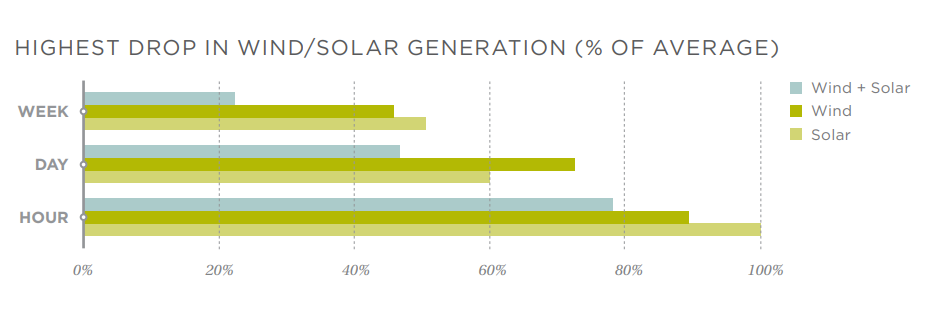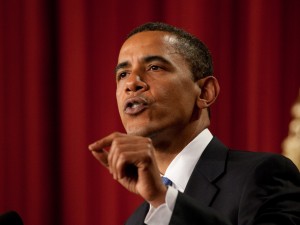By Jonathan Marshall, CCL Economics Research Coordinator
Eliminating climate pollution across every sector of the economy in the next quarter of a century, after two centuries of dependence on fossil fuels, may be the greatest challenge we have ever faced, but it’s also an opportunity to show what humanity can accomplish together in the face of an unprecedented global threat.
The drive toward net-zero emissions by 2050 must start by rapidly decarbonizing electricity while shifting more and more of our energy use for buildings, transportation, and industry onto the electric grid and away from oil, gas, and coal. We have a long way to go. As of 2021, renewables and nuclear power made up only 20% of all U.S. energy sources.
How Demand for Clean Electricity Will Soar to 2050

Source: RMI
Renewables are the bedrock – but aren’t enough
As the lowest cost source of new generation available today, wind and solar will likely be the growing foundation of any clean electric system for many decades to come. Nevertheless, they create vexing issues for utility and grid planners who labor to deliver reliable electric service at times when nature doesn’t provide adequate wind or sun to meet demand.
A University of California study analyzed hourly U.S. weather data over seven years and found that during the worst single hour, total wind and solar generation would have fallen 80% below their average output (see chart below). Smaller but still significant shortfalls would have lasted days or even weeks.

Source: 2035 Report
Such gaps in supply are more than an inconvenience. When electricity isn’t available to meet demand, the entire grid can collapse, leading to prolonged and costly regional blackouts. The challenge of managing the transition to a renewables-rich grid is multiplied by the prospect of soaring demand for clean power as more and more buildings and vehicles go electric.
Complementary solutions
Given their inherent variability, investing only in more wind and solar capacity to meet demand would send system costs soaring and provoke more disputes over the vast land area needed to site them. Fortunately, other solutions are available to complement renewable energy, promoting reliable and affordable clean electricity. To help CCL volunteers understand how we can solve these grid decarbonization challenges, the Research Team has developed training pages on wind and solar energy and these complementary solutions:
- Firm clean generation. One of the best hedges against the variability of renewables is having an adequate supply of “firm” clean generation capacity, which can be dispatched as needed at any time. Examples include nuclear, gas-fired and biomass plants with carbon capture systems, hydropower, and geothermal generation.
- Energy storage. As costs plummet, energy storage looks like a better and better bet for mopping up previously wasted surplus renewable energy and then releasing it back to the grid when output declines—for example, in early evening hours when the sun dips but demand remains high. As cheap wind and solar approach 80% of generation, utilities will need enough storage to provide backup energy over multiple days.
- Transmission. Besides delivering power from remote wind and solar farms, more transmission can help utilities access surplus clean power in neighboring regions when their own renewable supplies run short. Transmission investments can thus pay off handsomely by reducing the need to build more local generation and supporting grid reliability. But the required investment won’t be trivial; total U.S. transmission capacity may need to double or more by 2035 to support decarbonization.
- Demand Response. Sometimes the cheapest solutions fall on the demand side. Many utilities now offer “demand-response” programs that induce customers to curtail their usage to help avoid blackouts or lower system costs if generation runs short. Some residential customers even let their utility remotely turn down their air conditioning for a short time on hot afternoons. Special programs encourage customers to preheat or pre-cool their buildings before periods of peak demand set in. Equipping buildings with smart energy management technologies, to avoid the cost of buying and operating new power plants just to handle peak demand a few hours each year, could save the U.S. power system more than $10 billion a year by 2030 and reduce climate pollution as much as shutting 50 coal plants, according to the Department of Energy.
These solutions work best as a diversified mix
When I read about the trillions of dollars of new investment and thousands of gigawatts of new generation capacity required to decarbonize the grid, I’m reminded of the daunting challenges ahead. Then I’m encouraged by remembering that for every problem there are multiple complementary solutions—and if implemented, they will almost certainly lower the cost of electricity over time even as they help mitigate our climate crisis.
The best mix of energy sources and technologies, of course, will depend on their future costs and capabilities, and will vary region to region based on the resources available.
This is why CCL focuses on technology-neutral policies, like carbon fee and dividend or clean energy permitting reform, which allow consideration of diverse options that will reduce emissions while supporting reliability and affordability.
Send a message to Congress about the importance of eliminating climate pollution




